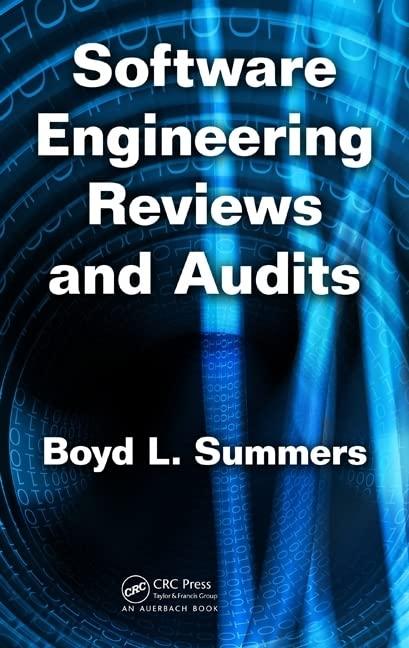Question
QUESTION 1 Of the following statements, which is true? a. None of the answers are correct b. The cost of harvesting a pineapple plantation are
QUESTION 1 Of the following statements, which is true? a. None of the answers are correct b. The cost of harvesting a pineapple plantation are additional processing costs c. Real estate taxes are an example of joint costs d. Joint cost allocations are helpful in assessing a product's profitability e. Common costs are incurred only in disassembly 2.00000 points QUESTION 2 Which is NOT true of the various methods of allocating service department costs? a. The direct method is quick to compute, accurate, and has low information requirements b. The choice of method affects the optimal allocation of resources c. Application of the reciprocal method in a complex corporation usually requires the use of a computer d. There are multiple sequence possibilities for the step-down method 2.00000 points QUESTION 3 A sound allocation system should: a. be cheap and easy to administer b. charge in proportion to amount used or benefit received c. provide incentives for cost control d. all of the answers are correct 2.00000 points QUESTION 4 Internal resources, such as the legal department, training department, information technology department, tend to be under-utilized, leading to a death spiral, when: a. the internal pricing system utilizes full costs b. All of the answers are correct c. managers may decide to reduce the quantity of services used d. the internal pricing system seeks to recover sunk costs e. managers may choose whether to purchase the service internally or externally 2.00000 points QUESTION 5 Which of the following are true about cost allocation? a. All of the answers are correct b. Cost allocation distorts choices that managers would make otherwise c. Cost allocation is an internal tax on services d. Cost allocation is a form of transfer pricing for indirect costs e. Cost allocation should be imposed when marginal cost exceeds average cost of an internal resource 2.00000 points QUESTION 6 You are going to a dinner whith three (3) friends, one who likes steak, another wine, and the third is a vegetarian (which is assumed to be the least expensive). Which is true? a. Equal sharing of the bill ensures that people order a similar dollar amount of food b. The wine-drinker will argue for equal shares, and will drink as fast (and/or as much) as possible c. How the bill is shared has no effect on what and how much people choose to eat d. The vegetarian will be better off with equal sharing of the bill 2.00000 points QUESTION 7 Joint costs in different industries may be allocated using any of the following methods, EXCEPT: a. relative profitability of line planks, plywood, chips and sawdust at the split-off point b. relative cubic footage of gases from a gas exploration process c. relative sales values of fresh tomatoes, pulp tomatoes and tomato juice at the split-off point d. relative new realizable values at the split-off point of gold, silver, copper found in 100 tons of mining ore 2.00000 points QUESTION 8 Which is NOT a reason for allocating internal costs to cost objects? a. US GAAP requires allocation of factory overhead b. To determine the amount to be reimbursed under a cost-reimbursement contract c. To determine the selling price of products d. Managers should be charged for benefits received by departments (or products) under their control 2.00000 points QUESTION 9 When considering the purchase of a large central system, such as power generation or computer networks, firms have to decide how big a system to acquire and whether, and, if so, how to charge the users for it after the purchase. Which is true? a. If the firm charges depreciation to the users, the likely consequence is that the firm acquires less capacity than needed b. If the firm charges users depreciation only, the likely consequence is that demand for resources equals capacity c. If the firm charges nothing to the users, the likely consequence is that the firm will likely acquire more capacity than needed d. If the firm charges the users the full cost, the likely consequence is demand for resources equals capacity 2.00000 points QUESTION 10 What are common methods for allocating joint costs? a. All of the methods provided are correct b. Physical measures c. None of the methods provided are correct d. Relative sales value method e. Net realizable value method
Step by Step Solution
There are 3 Steps involved in it
Step: 1

Get Instant Access to Expert-Tailored Solutions
See step-by-step solutions with expert insights and AI powered tools for academic success
Step: 2

Step: 3

Ace Your Homework with AI
Get the answers you need in no time with our AI-driven, step-by-step assistance
Get Started


